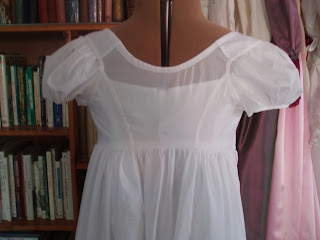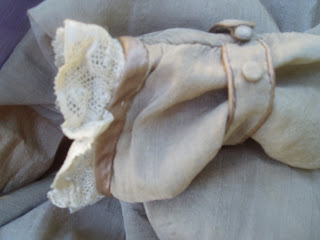There is a gown in Costume in Detail by Nancy Bradfield that I'll use for information.
Together with instructions for three-piece sleeves as shown on page 35 of Period Costume for Stage and Screen by Jean Hunnisett.
Join us here to discuss antique and reproduction Regency garments from the days of Jane Austen.
"Fanny, William must not forget my shawl if he goes to the East Indies; and I shall give him a commission for anything else that is worth having.....I wish he may go to the East Indies, that I may have my shawl." "Instructions to make a fichu:
- Austen, Jane: Mansfield Park
"The Empress had more than two hundred white muslin dresses. This was only a fraction of her extensive wardrobe. She changed clothes four and five times a day. It is not remarkable, then, that she owned several hundred dresses, 558 pairs of white silk stockings, 520 pairs of shoes (she never wore a pair but once), 500 lace trimmed chemises, 252 hats, and 400 shawls. She spent 3,000 francs a year for rouge and thousands more for perfumes, but she had only two flannel petticoats and two pairs of drawers!"
- "Dressing the Part", Fairfax Proudfit Walkup; 1938 F.S. Crofts & Co. (page 255)



































